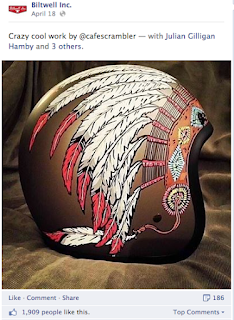Vodafone is one of the largest mobile phone network providers in Romania, and also one of the oldest. In fact, when it launched into the market in 1997, it was the first 2G provider in the country.
But in 2015, Vodafone’s market share was under threat.
 German operator Deutsche Telekom had recently entered Romania for the first time, integrating two local mobile networks to form the most powerful group in the category. To ensure immediate success, Deutsche Telekom had launched a massive above-the-line advertising campaign announcing its competitive contract offers.
German operator Deutsche Telekom had recently entered Romania for the first time, integrating two local mobile networks to form the most powerful group in the category. To ensure immediate success, Deutsche Telekom had launched a massive above-the-line advertising campaign announcing its competitive contract offers.
This spelled trouble for Vodafone, which was getting ready to launch its new superfast 4G mobile smartphone contracts.
Without the budget of Deutsche Telekom, regular price-driven campaigns wouldn’t have been effective. Instead, UM needed a more personable message that would trade on Vodafone’s established place as one of Romania’s longest-serving mobile providers.
The agency's objectives were to:
• Re-establish Vodafone’s credentials as a customer-friendly mobile provider that empowers Romanians to stay connected with friends and loved ones • Drive sales of new Vodafone 4G phone contracts and increase usage of data.
Strategy
Statistics show that more than four million Romanians over 75 live alone. For these lonely senior citizens who live isolated in the small apartments of urban Romania, life often feels challenging.
However, as the insights revealed, despite living alone, most of these old people – especially grandmothers – still try to make the most of things, by cooking large family meals on a Sunday. They don’t regularly have visitors, but it’s a tradition they just can’t bring themselves to stop – just in case their loved ones come over to visit.
 This contrasts sharply with the habits of university students. For them, a home-cooked meal is a rare delicacy. Unhealthy fast-food and ready-made meals make up most of their diet. This gave UM an idea.
This contrasts sharply with the habits of university students. For them, a home-cooked meal is a rare delicacy. Unhealthy fast-food and ready-made meals make up most of their diet. This gave UM an idea.
It would show how technology (and Vodafone’s new superfast 4G service) could fight loneliness and help people ‘Make the most of now’. If Granny’s family couldn’t join her for dinner, it would connect her with someone who could (and would really appreciate a little home-cooking): local students.
In line with Vodafone’s desire to celebrate ‘Romanian empowerment’ (it only uses real people in its advertising, not actors), the agency would select two real grannies and make them the face of the campaign – and Romania’s first senior citizen internet stars.
Using the power of Vodafone 4G internet, it would help the grannies put out a call on Vodafone’s social media channels, offering free dinner spots to the first students who responded to her message, and amplify the grannies’ social message with above the line advertising on TV, radio and outdoor.
In line with Vodafone’s empowerment message, it would show how Vodafone’s new superfast 4G mobile internet services could connect people and help change lives for the better.
Execution
Introducing: Sunday Grannies.
The agency identified Tanti Ani and Marcela, two ladies from Bucharest to be the face of this campaign.
It showed them the basics of social networks, helped them create profile pages on Facebook, and asked them to post pictures of their latest menus. UM then invited students on Facebook to visit the grannies for a free Sunday lunch.
As the unusual invitations began generating social buzz, UM activated the next phase of the campaign: full-spectrum ATL (above the line) activity.
It made a documentary showing how the lives of the two grannies had started to change and put it on TV. Soon their lonely apartment became the hottest lunch place in town. Romanian celebrities, like tennis player Simona Halep booked a seat for lunch. And even a judge from top-rated food TV show Masterchef was invited to see how the grannies’ food compared to the professionals’.
Asthe grannies’ recipes became more famous, Vodafone took their fame to the next level by launching they own cooking show through a series of segments integrated into Romania’s most successful morning show. Partnering with Mega Image, the biggest food retailer in Bucharest, it even turned one of the grannies’ most popular recipes – their signature Lemon Pie – into a product consumers could buy in their local supermarket.
As the message spread among Romanians of all ages, UM launched a Facebook app to help other grannies across Romania organize pop-up Sunday lunches and invite people over.
Results
Sunday Grannies connected the nation and turned empty houses into happy homes again. The campaign achieved over 380M media impressions, for a 99% reach.
The story was reported on all major Romania media outlets. Over 430,000 fans joined their Facebook page – making it the second most-popular Facebook page in Romania (after Coca-Cola).
The thrilling social outcome was a triple rate of Facebook adoption for seniors, from the launch of the campaign, extending to Q1 of 2015. This drove an impressive 20% increase in the total number of Facebook accounts owned by people over 65 years in Romania.
Moreover, Vodafone brand KPIs showed significant improvements in Simplicity (+9%) and Customer Service (+7%), attributes which were directly connected to the grannies’ demonstrations.
And the best bit? Sales of Vodafone’s 4G smartphone sales shot up by 79% in 2014 Q4, compared to 2013 Q4.
The Facebook community is still growing without paid media support, and the grannies are still cooking.













